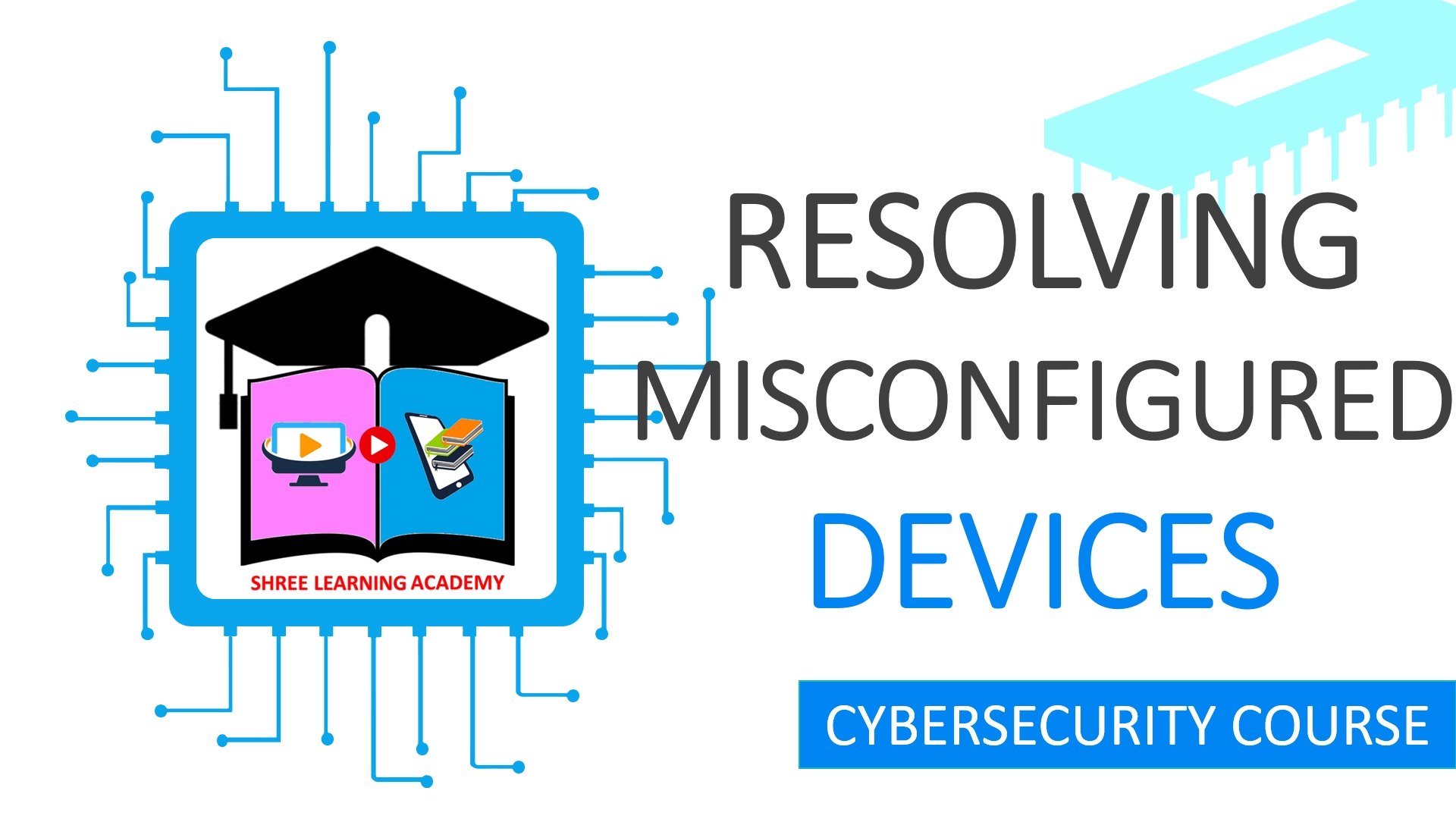SHREE LEARNING ACADEMY
A Hole In The Firewall | How Misconfigured Devices Can Get You Hacked!
Introduction
In the complex world of cybersecurity, misconfigured devices often create open doorways for hackers. Firewalls, content filters, and access points are crucial components of a network's security infrastructure. When improperly configured, they can compromise the integrity and safety of the entire network. To understand the magnitude of this risk and how to resolve it, we need to dig deeper into each element.
Misconfigured Devices: A Potential Threat
Often, cybersecurity breaches are not a result of sophisticated hacking techniques, but due to overlooked misconfigurations in the security infrastructure. The current trend among cybercriminals is to target these misconfigured devices as they provide a path of least resistance for intrusion.
Consider this: You leave your house for work and forget to lock the front door. An opportunistic thief, seeing this mistake, doesn't need any special skills to exploit it. The same goes for your network devices; if not configured properly, they become easy targets for potential attackers.
Mitigating this risk involves understanding the current configuration of devices and comparing them to a documented baseline or a 'gold standard' of how the configuration should look. Regular review of access logs and keeping an eye on the latest vulnerability disclosures also play significant roles in identifying and resolving misconfigurations.
The Vital Role of Firewalls and Risks of Misconfiguration
A firewall is essentially a network security device that monitors and controls incoming and outgoing network traffic based on predetermined security rules. In simpler terms, it's like a security guard at the gate of your network, determining who gets to enter and who doesn't.
However, if this security guard is not properly instructed (i.e., the firewall is misconfigured), it may either block authorized communications or permit unauthorized ones. For example, suppose you've accidentally configured the firewall to allow all incoming traffic from a certain IP range. In that case, an attacker within this range could gain unrestricted access to your network.
Resolving firewall misconfigurations involves a thorough review of firewall rules to avoid any potential loopholes or conflicts. Third-party evaluation tools can be beneficial in identifying any mistakes in firewall rule sets. Additionally, keeping the firewall updated with patches and securely managing access to the management interface can prevent breaches. For example, changing the default password, using complex passwords, disabling plain text access, and restricting access to the management interface to internal systems only, can bolster your network's defense.
The Importance of Content Filters and Configuration Challenges
Content filters play an integral role in network security by checking the communication traffic thoroughly. These devices inspect the payload, or the actual content of data packets transmitted over the network, and they block any traffic that matches predefined criteria.
A common example of content filter misconfiguration could be that the filter is not positioned correctly to access the plain text payload of application protocols, hence failing to inspect some communication. Or it might not be configured to account for alternate encoding techniques used by attackers to bypass these filters.
Solving this involves correctly positioning the content filter and regularly updating its settings to account for new techniques used by attackers. Moreover, it's also essential to escape metacharacters and check for processed results in content filtering, which can help prevent attackers from exploiting your network using special characters that the filter may not recognize.
Access Points: Common Targets and Configuration Solutions
Wireless access points are gateways that devices use to connect to a network wirelessly. They are especially vulnerable to attacks because they are often the first point of contact for devices seeking network access.
For instance, an access point that uses an outdated firmware, default configurations, insecure management console access, or weak authentication/encryption, is equivalent to a house with an easily pickable lock. An attacker can easily exploit these vulnerabilities to gain unauthorized access to your network.
Resolving access point misconfigurations involves several steps. First, you need to keep the firmware updated to the latest version to ensure that any known vulnerabilities are patched. Next, customizing settings, particularly security configurations that are often left at their defaults, can provide an additional layer of protection. It's also crucial to secure the management interface with strong passwords and use robust authentication and encryption methods, such as WPA-2, long and complex passwords, or IEEE 802.1x.
Conclusion
In conclusion, firewalls, content filters, and access points are all critical parts of a network's security. However, when they're misconfigured, they can turn into liabilities rather than assets. Resolving these misconfigurations involves a thorough understanding of these devices, their optimal configurations, and keeping an eye on the latest vulnerabilities and attack techniques. Remember, the safety of a network is only as strong as its weakest link. With regular checks, updates, and correct configurations, you can fortify your network against most threats.
Test Yourself
Take Free Quiz
Watch our Video Tutorial

